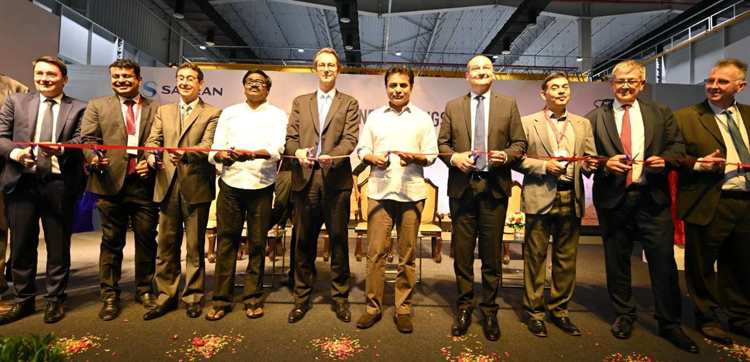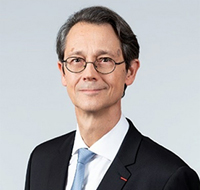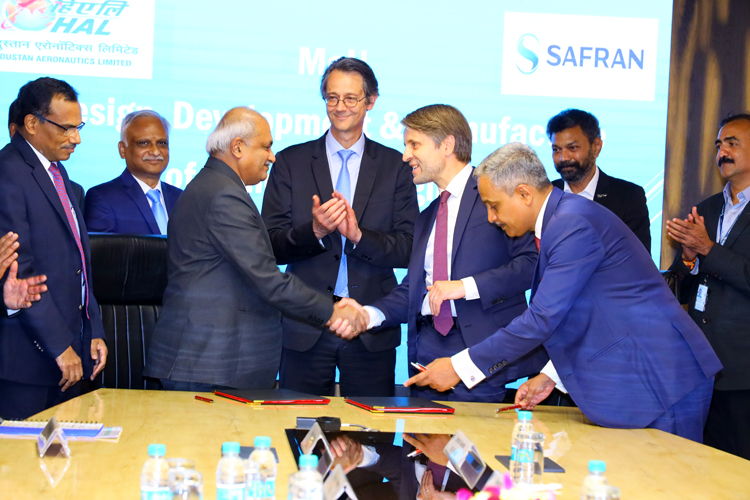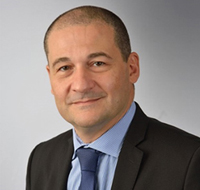INDIAN ARMED FORCES CHIEFS ON OUR RELENTLESS AND FOCUSED PUBLISHING EFFORTS

The insightful articles, inspiring narrations and analytical perspectives presented by the Editorial Team, establish an alluring connect with the reader. My compliments and best wishes to SP Guide Publications.

"Over the past 60 years, the growth of SP Guide Publications has mirrored the rising stature of Indian Navy. Its well-researched and informative magazines on Defence and Aerospace sector have served to shape an educated opinion of our military personnel, policy makers and the public alike. I wish SP's Publication team continued success, fair winds and following seas in all future endeavour!"

Since, its inception in 1964, SP Guide Publications has consistently demonstrated commitment to high-quality journalism in the aerospace and defence sectors, earning a well-deserved reputation as Asia's largest media house in this domain. I wish SP Guide Publications continued success in its pursuit of excellence.
Safran Expands in India
Safran inaugurated three new production sites in India and announced the construction of a new major facility by 2025. These announcements represent more than $200 million of investment, opening new job opportunities for Indians.
 |
The Author is Former Director General of Information Systems and A Special Forces Veteran, Indian Army |

In backdrop of the US-instigated conflict in Ukraine which has disrupted the global economy and supply chain, caused food and fuel shortages globally with Europe (dragged into the war) staring at a looming recession, French aviation major Safran is expanding its presence in India. On July 7-8, 2022, Safran inaugurated three new production sites in India and announced the construction of a new major facility by 2025. Safran has operated in India for 65 years and these announcements represent more than $200 million of investment in the period 2018-2025 opening new job opportunities for Indians.
Olivier Andriès, Chief Executive Officer of Safran said, “To support the country’s dynamic aviation market, with passenger traffic set to more than double in the next twenty years, we are accelerating our investments and industrial development in India. Through the creation of our largest maintenance and repair centre for commercial engines we are also paving the way to expand our MRO activities in India to military engines. With our three new production facilities and our major in-house IT centre we will triple the number of employees in India over the next four years, building on the excellent local talent base.”

Olivier Andriès, Chief Executive Officer of Safran said, “Through the creation of our largest maintenance and repair centre for commercial engines we are also paving the way to expand our MRO activities in India to military engines”.
On July 7, 2022, the Safran Aircraft Engines plant was inaugurated in Hyderabad. This plant (covering 15,000 square metres) will make rotating parts for the LEAP engine from CFM International, providing additional capacity for best-selling commercial airplane engines of its generation. The maintenance, repair and overhaul (MRO) facility will start operations in 2025, eventually offering annual capacity of 250-300 engine shop visits. Safran Electrical & Power’s plant, located in the same airport zone as the Safran Aircraft Engines plant and sharing all support functions, makes wiring for LEAP engines and the Rafale fighter.

On July 8, 2022, the Safran HAL Aircraft Engines plant was inaugurated in Bengaluru. It is a 50/50 joint venture (JV) between Safran Aircraft Engines and Hindustan Aeronautics Limited. This replaces the earlier plant of 2005. Covering 11,000 square metres and located in a Special Economic Zone (SEZ) near the Bengaluru airport, the plant makes complex piping, mostly for the LEAP engine, and has about 150 employees which will increase to 200.
Safran and HAL have signed a memorandum of understanding (MoU) on military engine collaboration announcing their intent to work together on bringing niche engine technology to India. A significant amount of transfer of technology (ToT) is also contemplated in the assembling and manufacturing programmes.
Olivier Andriès also announced the creation of Digit, an in-house entity tasked with development of digital systems for Safran. The entity’s two main facilities, in Hyderabad and Mumbai, start operations in the summer of 2022. Digit plans to recruit 1,000 people over the next five years by calling on India’s vast talent pool for the development of digital applications and systems, as well as cyber-security.
Safran and HAL have signed a memorandum of understanding (MoU) on military engine collaboration announcing their intent to work together on bringing niche engine technology to India. Under the MOU, HAL and Safran will explore opportunities to assemble the Safran M88 engine and manufacture components for the engine with HAL for additional batch of Rafale Aircraft for India and for any aircraft manufactured in India by HAL fitted with M88 engine. A significant amount of transfer of technology (ToT) is also contemplated in the assembling and manufacturing programmes.
Significantly, the MoU also covers Safran-HAL collaboration in indigenisation to design and develop high thrust engines of 110 kN power and above with transfer of key technology in the framework of this development. The company will be dedicated to the development, production, sales, and support of helicopter engines, and one of its main objectives will be to meet the requirements of HAL and the Indian Ministry of Defence's future helicopters, including the 13-tonne Indian Multi-Role Helicopter (IMRH).

R. Madhavan, Chairman and Managing Director, HAL has stated, “Safran is our key partner in respect of Engines in HAL’s Helicopters like Chetak, Cheetal, Light Utility Helicopter, Light Combat Helicopter and Advanced Light Helicopter. HAL and Safran have successfully co-developed ‘Shakti’ Engine for Advanced Light Helicopters and Light Combat Helicopter. We have manufactured more than 450 Shakti engines in India at HAL Engine Division in Bengaluru, which is testimony of success of our collaboration. Both HAL and SAFRAN are keen to take this partnership to next level by exploring new avenues”.

Jean-Paul Alary, Chief Executive Officer of Safran Aircraft Engines said, “Broadly, we remain committed to supporting the ‘Make in India’ policy through major investments, synergy, and high skilled job creation.”
Madhavan went on to say, “HAL and Safran are interested in exploring opportunities for strategic business cooperation that leverage the complementary talents and capabilities of the parties and support development of a robust ecosystem for aero-engines in India, consistent with the goals of the Government of India’s Make in India initiative”. HAL and Safran had also up in 2005 to create an equally-owned joint venture in Bengaluru which produces pipes for aero-engines.
Jean-Paul Alary, Chief Executive Officer of Safran Aircraft Engines said, “We are looking forward to expanding our collaboration with HAL, by exploring opportunities in strategic areas. Broadly, we remain committed to supporting the ‘Make in India’ policy through major investments, synergy, and high skilled job creation.”
The above are significant developments not only for ‘Make in India’ but also for ‘Make in India, Make for the World’. The HAL-Safran MoU will give India access to complex and niche technologies to design and develop high thrust engines. This is good not only in terms of ‘Atmanirbhar in Defence’ but also offers possibilities to export these in the future.





